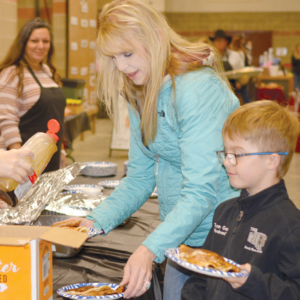CR Builders, 2101 Overland Ave, 59102, 254-1677, Donald Sterhan, general contractor
LL Flooring Inc, 2549 Enterprise Ave, 59102, 804-462-2000, Jessica Overstreet, retail sales
Precisionxproducts, 1245 Matador, 59105, 672-3487, Zachary Wallis, service
Schluter Short Term Rentals, 2334 Hyacinth Dr, 59105, 509-869-5777, Chad Schluter, real estate rental, 59105
AMR Solutions, 2103 Hillner Ln, 59101, 698-8570, Angela Reynolds, service
Paws and Ponies LLC, 7435 Bellrock Way, 59101, 672-2386, Frank Constance, service
Rougue Plumbing and Heating Inc, 623 S48th St Ste A, Grand Forks ND 58201, Ryan Olson, plumbing contractors
3311 Harlou Dr, 3311 Harlou Dr, 59102, 696-9304, Parker Peterson, real estate rental
Pioneer Sheds LLC, 4221 Kari Ln, 59102, 380-2375, Andrew Hersberger, retail sales
Hseyfert sewing, 484 Wheatstone Dr N, 59102, 633-3318, Holly Seyfert, service
RJJI Montana Inc, dba Billings Nursery Landscaping, 7900 South Frontage Rd, 59101, 656-2411, Judy Reimer, service
Burnin The Bone Smokehouse, 2595 Carlin St, Laurel 59044, 647-5143, Todd Payne, restaurants
Terwisscha Construction Inc, 1550 Willmar Ave SE, Willmar MN 56201, 320-235-7664, general contractors
Legacy Wingtsun, 3275 Conrad Rd #6, 59102, 699-3137, Keith Tipton/Jeff Andrews/Joshua Tolentino, service
Poly’s Place Coffee, 1704 Poly Dr, 59102, 672-1044, Diane Morledge-Hampton, retail sales
Monroe Art, PO Box 768, Browning MT 59417, 275-7599, Lauren Monroe Jr, retail sales
Unorthdoxmuse Productions, 319 Yellowstone Ave, 59101, 861-1174, Amy Mcomber, retail sales
The Carpenters Creation, 1032 Alpine Ave, Cody WY 82414, 512-698-3160, Laura Carpenter, retail sales
Hunt Energy LLC, 4005 1st Ave S, 59101, 245-1150, Dean Erickson, service
Prestige Worldwide Comics and Collectibles, 928 Broadwater Ave – Ste 105, 59102, 384-3552, Michael Oxford, retail sales
Holly Folk, 1326 Yellowstone River Rd, 59105, 855-8075, Morgan Hofmann, retail sales
Golden H LLC, 1813 Waterwood Dr, Laurel 59044, 321-1550, Brady Wiggs, general contractor
Montana Peaks Insurance Agency LLC, 2450 Tara Ln, Worden 59088, 320-0160, Danielle Petersen, insurance
Kampe Construction, 428 Greenspring Pl, 59102, 208-404-8699, Kenneth Kampe, general contractor
Keep It Alive Antiques and Collectibles, 928 Broadwater Ave – Ste 105, 598-7692, Sean Osborne, retail sales
Premier Home Inspection LLC, 38 Buckboard Rd, Park City 59063, 698-2875, service
Roadside Recovery of Montana, 7900 King Ave West, 59106, 661-1028, Robert Dalton, service
Ductbusters Duct Cleaning, 1042 Howard Ave, 59102, 598-6216, Jacob Ayers, service
Swift Construction, 3020 S 65th St W, 59106, 690-5710, James Swift, general contractor
Pops Tots, 7710 Lewis Ave, 59106, 834-1767, Ronald Mylar, restaurants
Daltons Prairie Paths Taxi & Shuttle, 621 1st Ave, Custer 59024, 697-5205, Bryce Dalton, service
Bakken Tree Service, 1134 ½ Bench Blvd, 59105, 598-8713, Michael Bakken, service
Scott’s Installation and Remodel, 1216 Matadore Ave, 59105, 596-1014, Scott Dedmore, general contractor
White Pine Construction LLC, 1717 Avenue C, 59102, 876-1475, Davis Brock, general contractor
Benny’s, 516 S 30th St, 59101, 647-7268, Benito Charles, restaurants
Newton Construction & Landscaping, 302 Jackson St #5, 59101, 371-3466, Xavier Figg, general contractor
Chipolte Mexican Grill #5076, 548 Main St, restaurants
Scott Properties LLC, 3955 Trailwood Dr, 59106, 670-1144, Steve Scott, real estate rental
Out of Square MT, 2008 Beverley Hill Blvd, 59102, 208-6682, Daniel Nelson, retail sales
Mazen LLC, 1744 Canary Ave, 59101, 855-8137, Robi Rossol, general contractor
Trewhella Consulting, 3390 Canyon Dr E5, 59102, 670-3097, James Trewhella, service
Echo Canyon Construction LLC, 7817 Molt Rd, 59106, 656-0570, Travis Fears, general contractor
Noble Operations, 2511 Clark Ave, 59102, 927-9401, Chad Noble, service
Addy Rose Salon & Studios, 805 24th St W #5, 59102, n/a, Keshia Wegner, service
Consulting Minds, 2110 Overland Ave #121, 59102, 534-4880, Connie Brown, service
Mike Wilhelm Electric, 4342 Rangeview Dr, 59106, 580-0438, Mike Wilhelm, electrical contractors
Caddy Cuts Construction, 432 Hillview Ln, 59101, 591-4705, Jayde Mikkelson, general contractor
Craftsman-Robert Murphy, 1526 Avenue F, 59102, 352-398-3964, Robert Murphy, service
Weetreehomesllc, 3930 2nd Ave S, 59101, 850-1249, Brian Rathay, general contractor
Rollhouse Bakery LLC, 819 S 33rd St, 59101, 697-1196, Jennifer Keller, retail sales
Z.O.D., 135 Hemlock Dr, 59101, 619-905-4050, Zachary Barnes, general contractor
J Houlihan Construction LLC, 3541 Granger Ave WY, 59102, 697-3768, Jacob Houlihan, general contractor
Big Sky Brats, 1009 Reading Circle, Laurel 59044, 605-295-0751, Jeremy Unruh, restaurants
Central Avenue Holdings LLC, 220 McLeod, Big Timber 59011, 932-5000, John Holifield, general contractor
Flawless Frame LLC, 3307 Grand Ste 201, 59102, 696-3420, Jennifer Fowler, service
Jewel Project Management and Design Consulting, 1968 Lakehills Dr, 59105, 670-6958, Deborah Greene, service
Legacy Counseling LLC, 208 N Broadway #423, 59101, 896-8427, Emily Smith, service
Dave’s Hot Chicken, 1020 Shiloh Crossing Blvd, 59102, 781-733-6832, Benjamin Quinlan, restaurants
New Cingular Wireless PCS LLC dba AT&T Mobility, 644 Broadwater Ave, 59101, 561-627-3365, Frank Maxwell, service
Montana Meal Prep, 487 S 44th W #5101, 59106, 890-4553, Kalen Jongeling, retail sales
42 West LLC, 6170 Elysian Rd Unit 103, 59101, 855-0822, Tiffany Deavers/Dr Michael Roberts, service
Thomas White, 2951 Custer Ave, 59102, 647-8906, Thomas White, general contractor
Milan Laser Hair Removal, 820 Shiloh Crossing Blvd Ste C, 59102, 402-306-6298, Milan Laser Corporate LLC, service
Farmgrounds Coffee Company LLC, 5623 Grand Ave, 59106, 698-5049, Jacob $ Douglas Kramer, restaurants
AAASTUC,CO LLC, 2492 Petersen Dr, Cheyenne WY 82009, 307-763-9748, Tanya Wunder, service
Trulock, 238 Pueblo Dr, 59102, 384-1274, Richard Stadler, service
Blown’ Snow Inc dba Snow Squad, 2170 Shackleford Ln, 59101, 743-9900, Tyler & Beth Hollenbeck, service
Corie May Creations, 2601 Wyoming Ave, 59102, 206-6462, Corrina Nagel, retail sales
John C Murphy DDS MSD, 949 Broadwater Sq, 59102, 259-2910, John C Murphy, dentist
Clayton Cleaning & Maintenance, 386 Westchester SQ S Apt 1, 59105, 861-6938, Joseph Clayton, service
Little Rad Dudes, 1503 13th St W, 59102, 200-4933, Kalee Gontarek, retail sales



